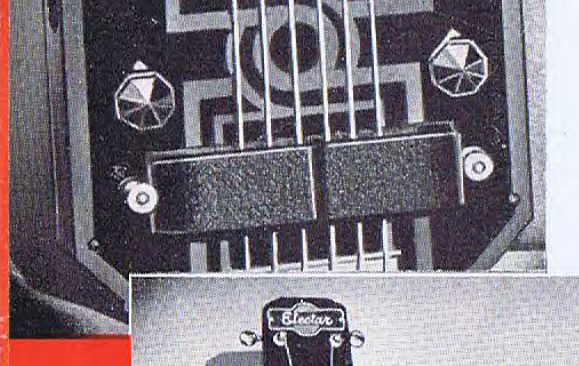
Close-up #47: Pickups, part 1 / 1935–42
In this two-part overview we look at the pickups Epiphone used in their electric guitars between 1935 and 1956.
Part 1 is dedicated to the pickups of the pre-war years – until 1942, when production of electric instruments was temporarily discontinued due to wartime material restrictions. The upcoming Part 2 will cover the years from 1946 (when Epiphone relaunched electric instruments production after WW2) to 1956.
This text owes a lot of insights to the indispensible book "Epiphone – The House of Stathopoulo" by Jim Fisch and L. B. Fred. – especially pages 109ff. Highly recommended!
General remarks
- In this text we focus on the pickups installed in 6-string
electric guitars and lap steels. However, most of the discussed
pickups were also used in versions for instruments with fewer or
more strings – with the respective number of pole pieces in
adjustable pickups.
- Starting in 1939, Epiphone also offered various "add-on" pickup
devices to amplify acoustic instruments – such as the "Amperite
Kontak Mike", the "Epiphone Converter", and the "De Armond Guitar
Microphone". These devices are not covered in this overview (Some
info in the aforementioned book by Fisch/Fred, pages 183ff).
- Dating/originality caveat: Pickups are parts that often get
replaced during the lifetime of an instrument. It is very common to
see electric Epis with a later pickup either by Epiphone or another
manufacturer.
While (later) replacement pickups are often easily identified by their "incorrect" model features, in some cases it is more difficult to identify a pickup as non-original to an instrument in question – especially when the replacement unit appears to be an original Epiphone unit of similar vintage.
Also to consider: At the factory, new instruments typically received pickups shortly before shipping; while some instruments of a production batch (serial number range) sold quickly, others were obviously shipped months or more later – sometimes receiving an updated product.
Footnote: Miessner patents plate
On most electric Epiphone instruments of the 1936 to 1942 period we find a small metal plate – nailed either to the back of the headstock (Spanish models) or body (Hawaiian models) – reading:
Patented. Licenced by Miessner
Inventions, Inc., Millburn N.J.
under one or more of the following U.S. patents:
1.906.607
– 1.915.858
– 1.929.027
– 1.929.029
– 1.992.438
1.912.293
– 1.915.859
– 1.929.028
– 1.933.296
– 2.027.074
and other pending patents
I inserted links to the respective patent listed on the Google Patents website.
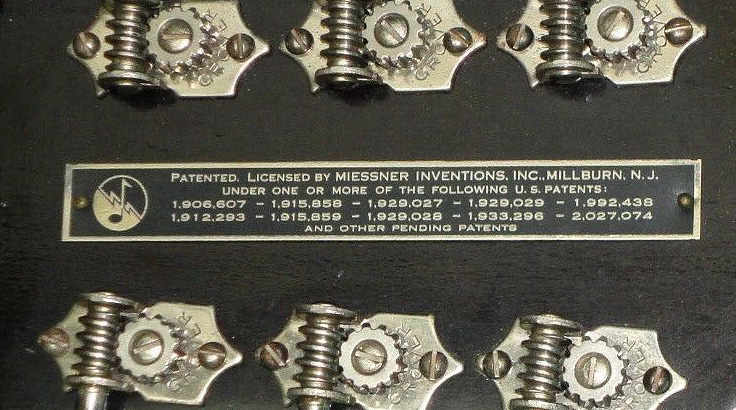
Benjamin Franklin Miessner hold a number of patents in electronic (re-)production of music. Although his company apparently never manufactured any such products, he urged numerous guitar manufacturers to take a licence – threatening to sue them for patent infringement. Epiphone was among those who caved in, while others such as Gibson and Rickenbacker resisted. By the 1940s Miessner seems to have given up to pursue his claims – and also Epiphone stopped using the Miessner patents plates when they relaunched their electric instrument production after WW2.
(See also publication: Matthew William Hill, George Beauchamp and the rise of the electric guitar up to 1939, Edinburgh, 2014)
1. "Horseshoe" pickup (1935–37)
Epiphone first announced the Electar Hawaiian and Spanish models in November 1935. The pickup was inspired by the units on early Rickenbacker electrics – based on two U-shaped "horseshoe" magnets wrapping around a coil and the strings. (Rickenbacker's George D. Beauchamp had filed a patent for his pickup design in June 1934, granted in August 1937).
On the earliest Electars the magnets are chrome-plated, as seen on the 1935 Electar Hawaiian below. Note the octagonal "carousel" knobs on the tone and volume pots – these became an Epiphone classic seen on many models over the years.
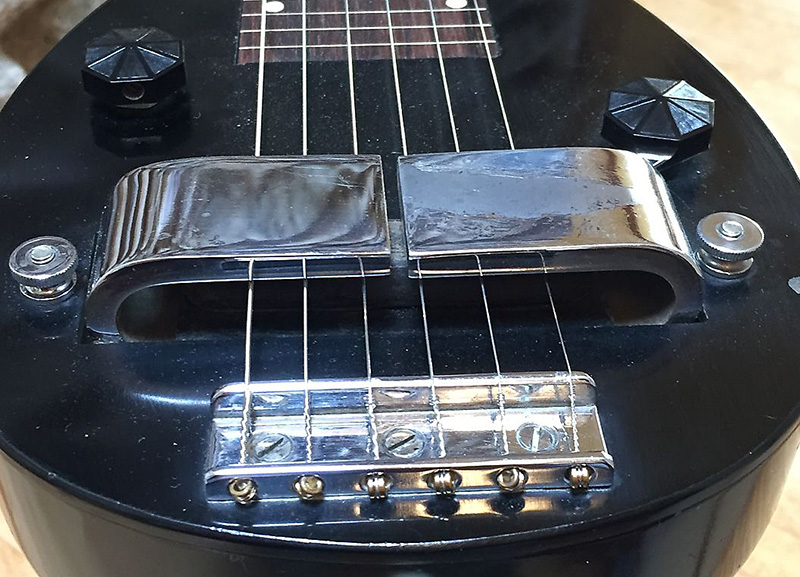

Chrome-plated horseshoe pickup on a 1935 Electar Spanish – inserted through a door in the back and attached to the top by two bolts. The pickup height could be adjusted via the knurled thumbwheels – as pointed out in the 1937 Electar catalog blurb (see illustration further down).
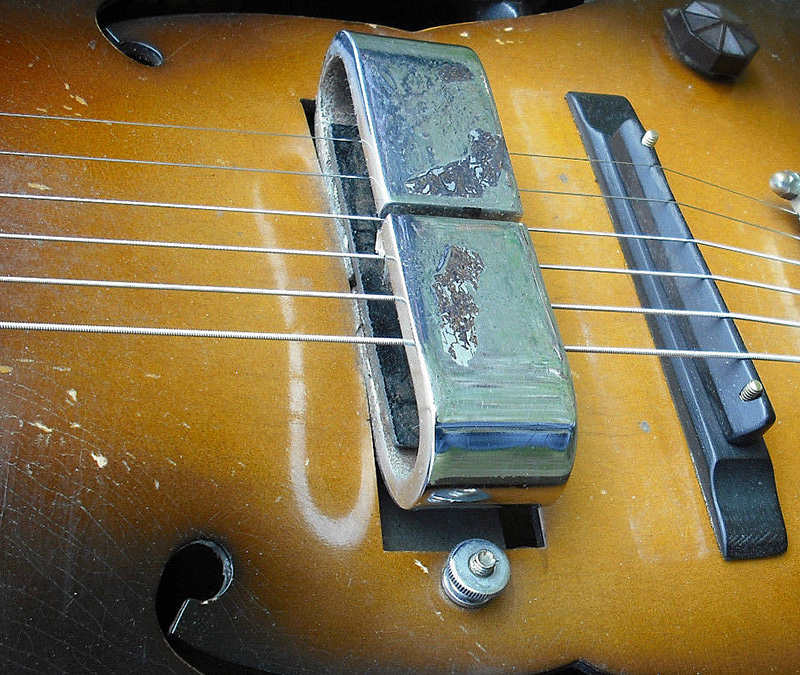
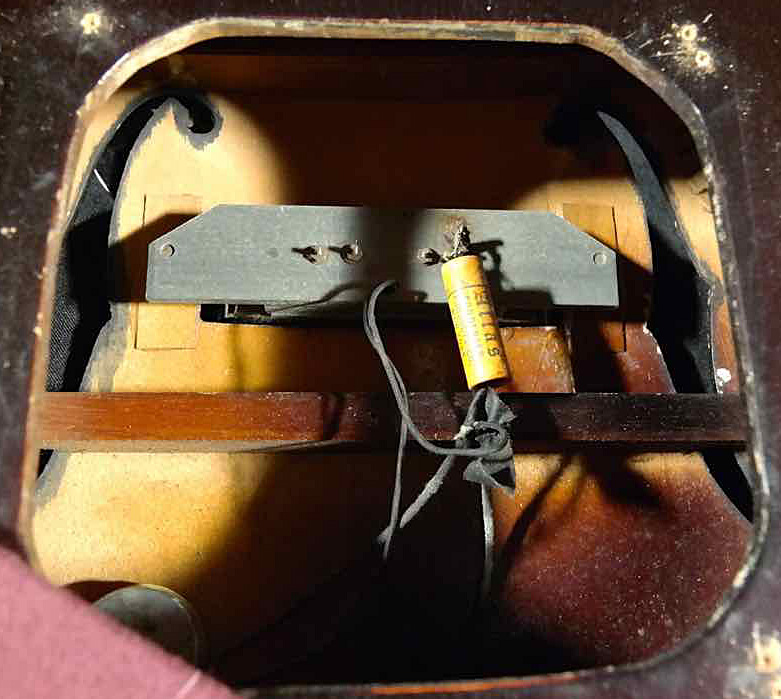
Below: 1936 Electar Model M Hawaiian and 1937 Model M Spanish – the horseshoe magnets are now painted black. Pictured below part of a 1937 catalog page.

On early Model M Hawaiian, the serial number is also stamped inside between the pots.
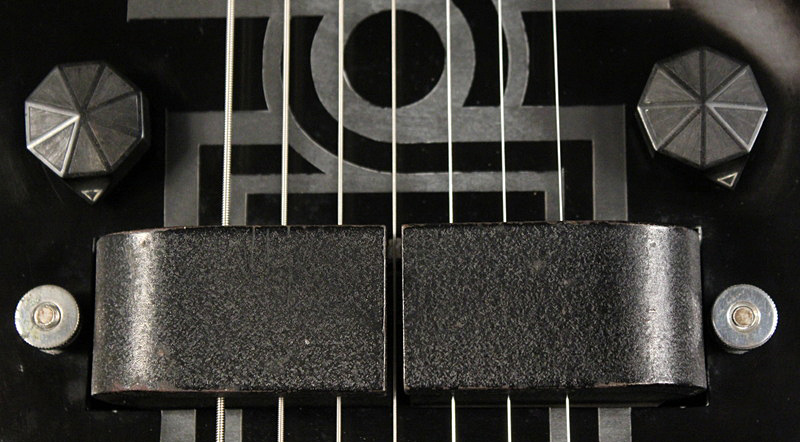
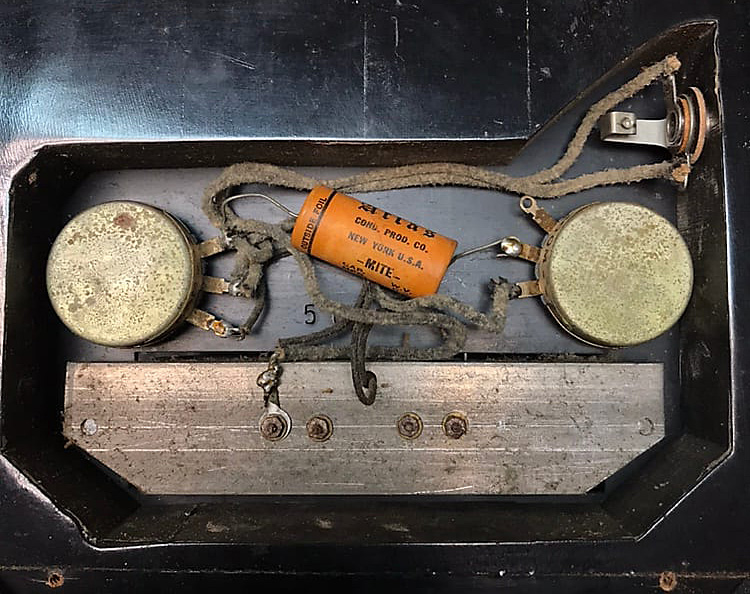
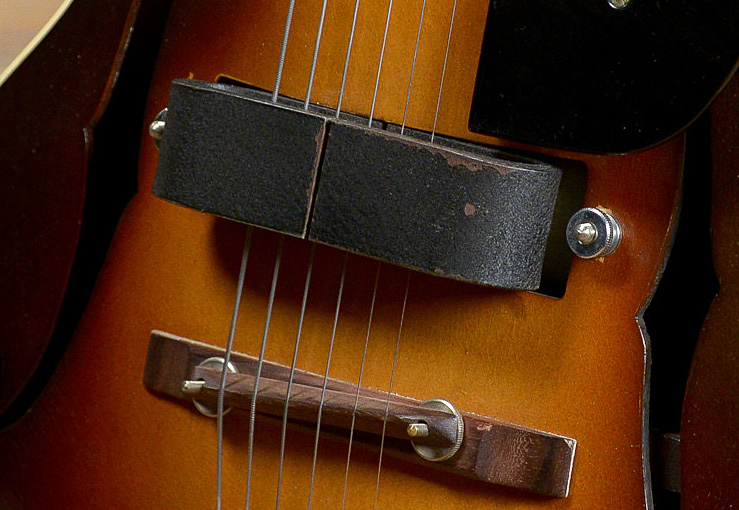
Below a 1937 Model M Hawaiian – featuring the short-lived, 3rd "rhythm control knob": This pot worked basically as a bass roll-off – in addition to the conventional tone pot (treble roll-off) and the volume pot. The same 3-knob configuration was also used on the 1937–38 Model M Spanish.
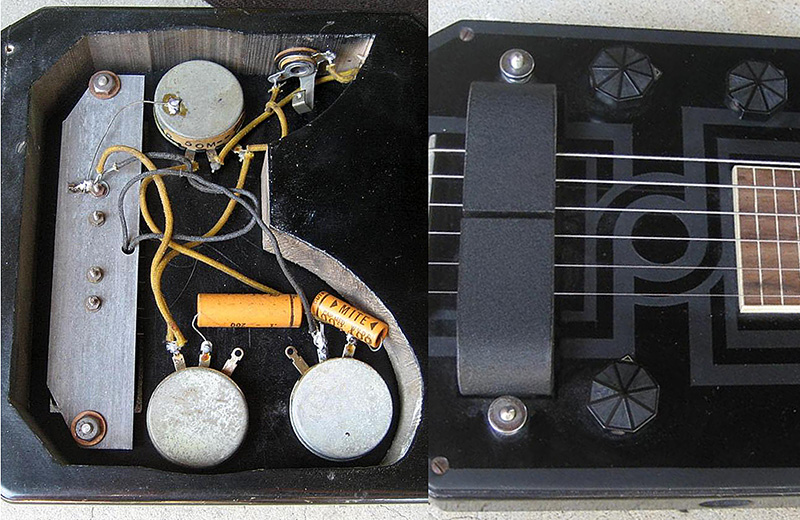
2. Blade pickups, pre-war (1936–42)
The budget Model C Hawaiian, introduced in 1936, featured a more compact pickup – with a coil around a "blade", housed in a black plastic cover – as seen below on a 1938 example. The blade is attached to a flat bar magnet. The construction is similar to Gibson's "Charlie Christian" pickup. Pictured below part of a 1937 catalog page.
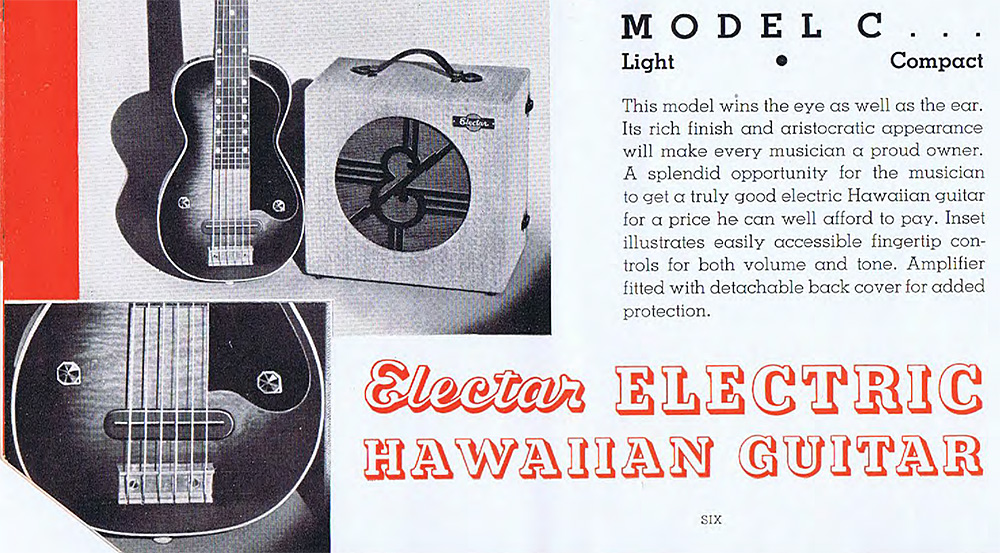
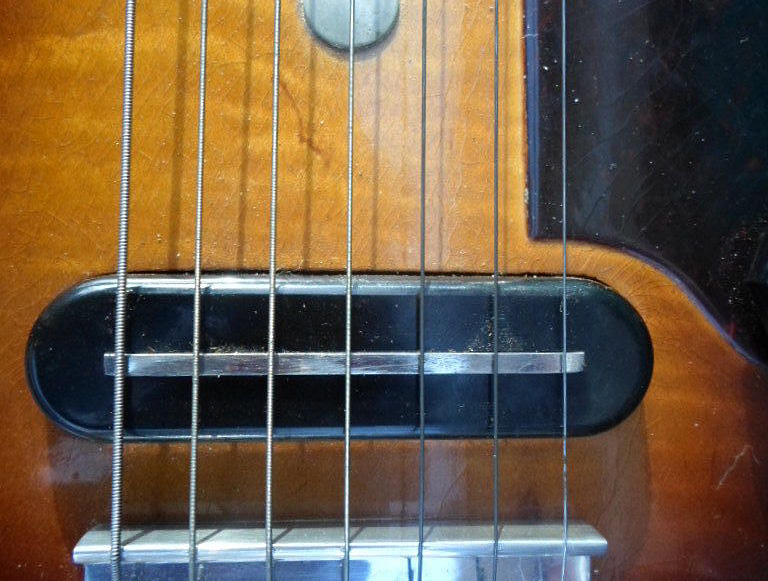

The 1937 Model C Spanish used the same blade pickup – featuring a large wooden pickup ring around the pickup cover.

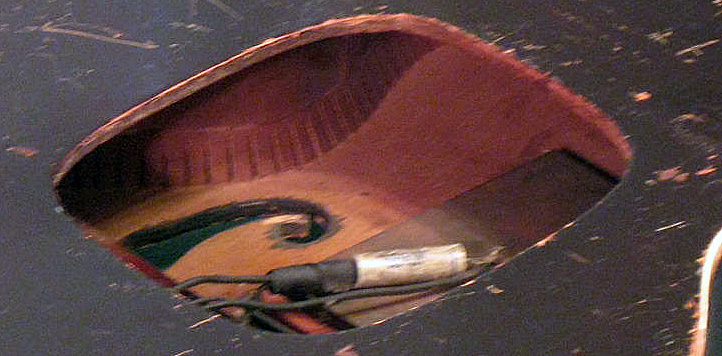
In 1939, the Electar Model C line was replaced by the Coronet models – with similar blade pickups. Below a 1940 Coronet Spanish – featuring a small plastic pickup ring, hold by four screws.

Note the three bar magnets attached to the angled blade. The unit is mounted from inside on a wooden block.
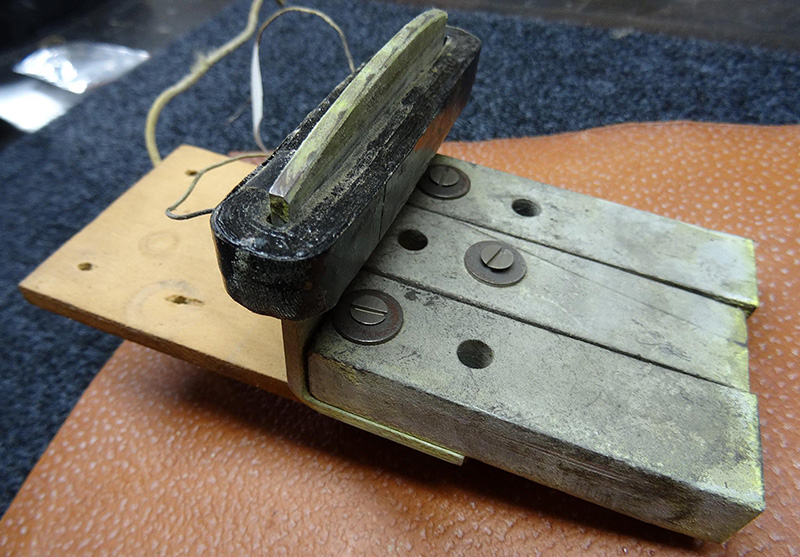

On the Coronet Spanish, the blade fits through a slot in the guitar's top – with the coil fitted from outside and hold in place by a plastic cover. Note that this design allows for a narrower pickup slot in the top – compared to other models where the entire pickup including coil and cover has to fit through.

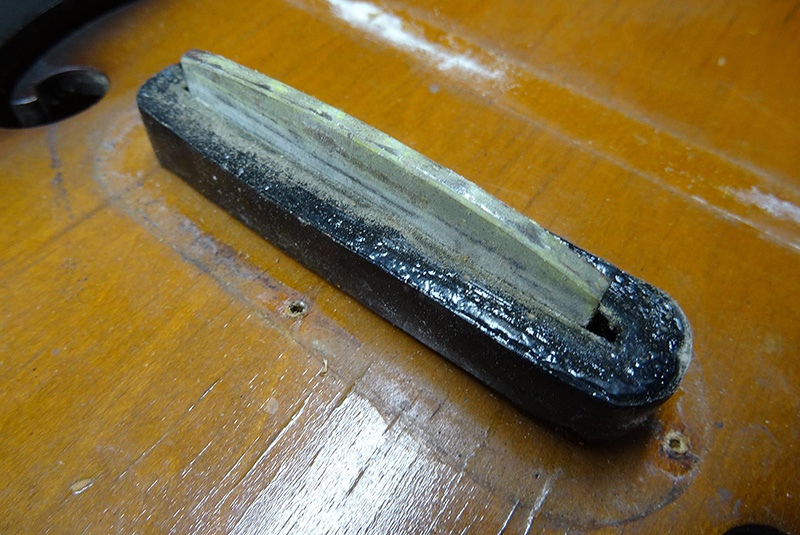
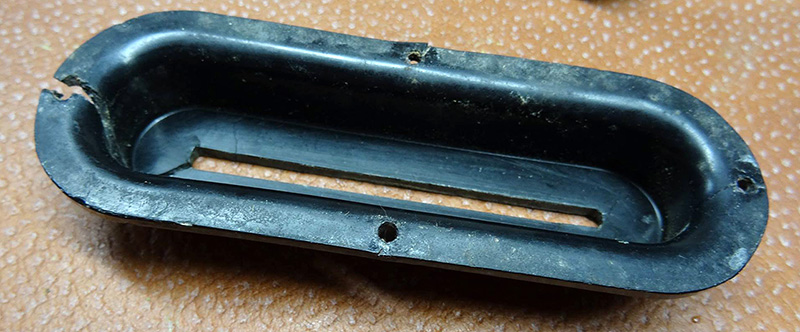
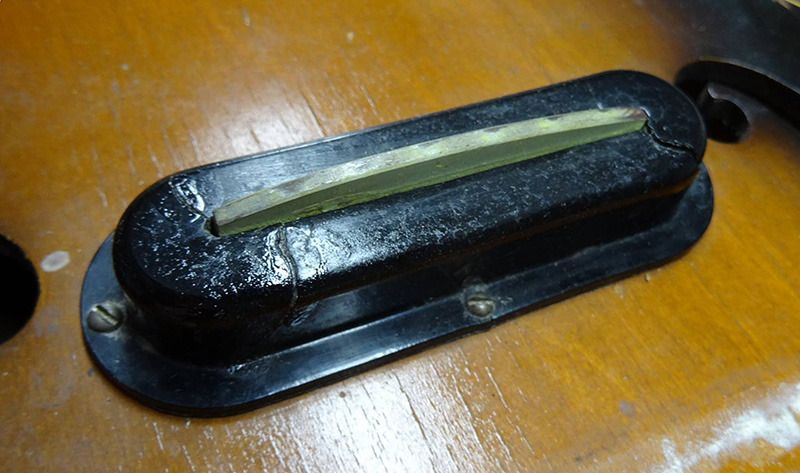
Below a 1940 Coronet Hawaiian: Here the entire pickup is mounted from inside the body – note the flat bar magnet attached to the angled blade.
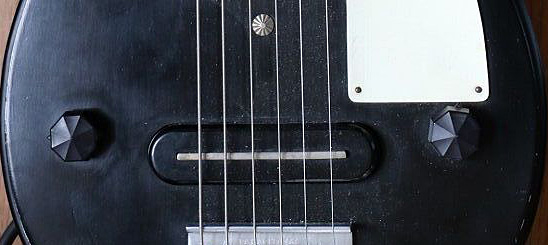
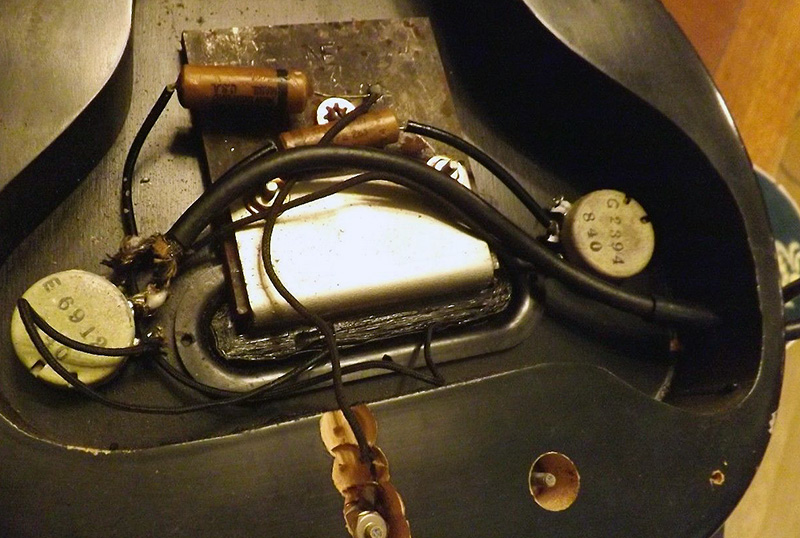
The Century model line was introduced in 1939, featuring a similar blade pickup. The 1939 Century Hawaiian had a handrest over the pickup (no plastic cover around the coil). Two bolts are holding the pickup and the handrest. Here the magnet is L-shaped.
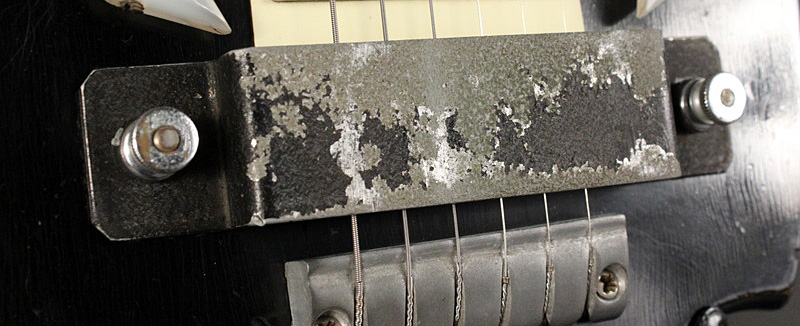
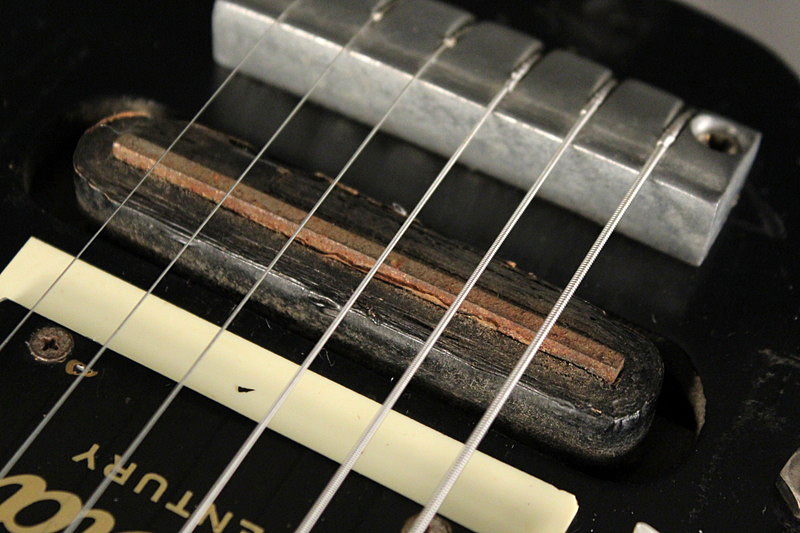
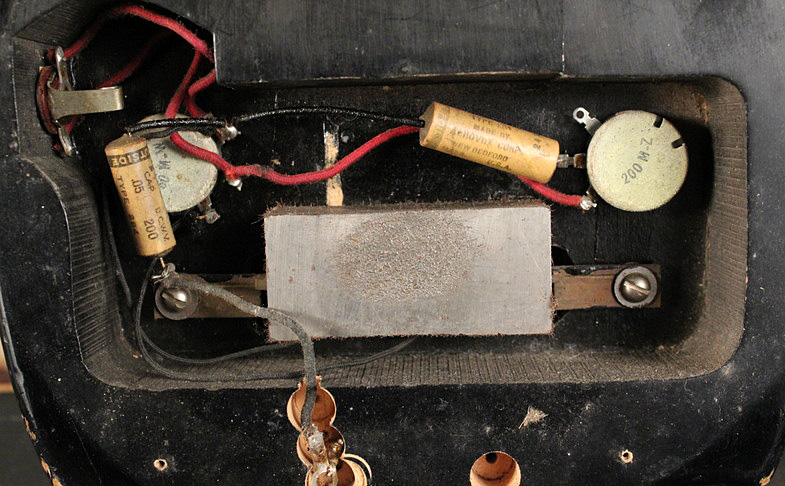
The 1939 Century Spanish was also equipped with a handrest (removed in the picture below): The pickup unit is mounted from inside the body and hold by the handrest bolts. The U-shaped magnet is visible through the rather large opening.
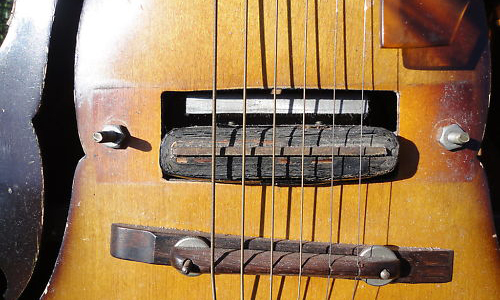
Below the disassembled pickup/handrest unit from a 1939 Century model.

In 1940, the handrest was dropped on the Century Spanish, and the pickup coil was now encased in a plastic cover. The entire unit is mounted from inside the body, hold by a plate attached to a wooden block under the top. Note the U-shaped magnet.

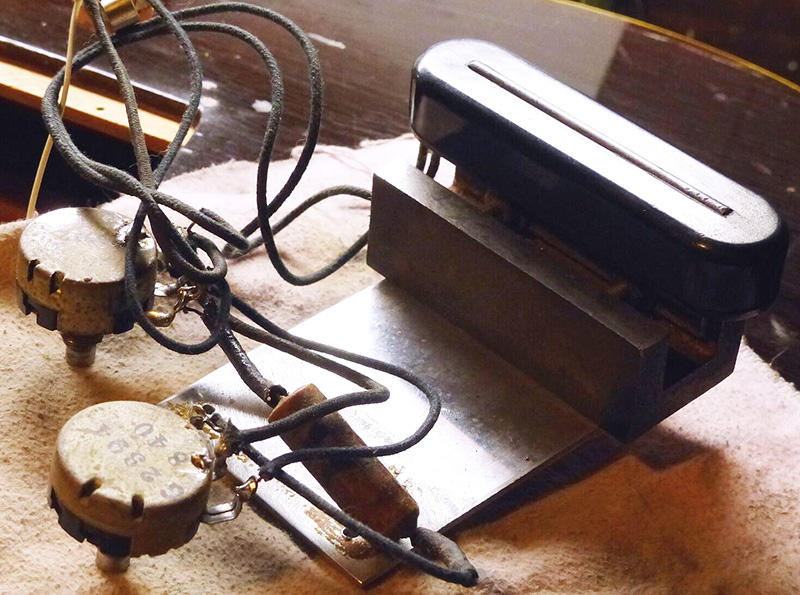
3. TruBalance/Master pickups, pre-war (used 1937–42; on Zephyr Hawaiian also 1946–47)
Epiphone was first to develop a pickup with adjustable pole pieces – see the patent application employee Herb Sunshine filed in November 1937. This pickup unit was introduced on the Model M line around that time – initially named "TruBalance pickup" in sales literature. In the 1939 catalog and adverts, the pickup with adjustable poles was renamed "Master pickup" – to go with the "Master Voicer" tone control – appearing on the high-end Zephyr and Console models.
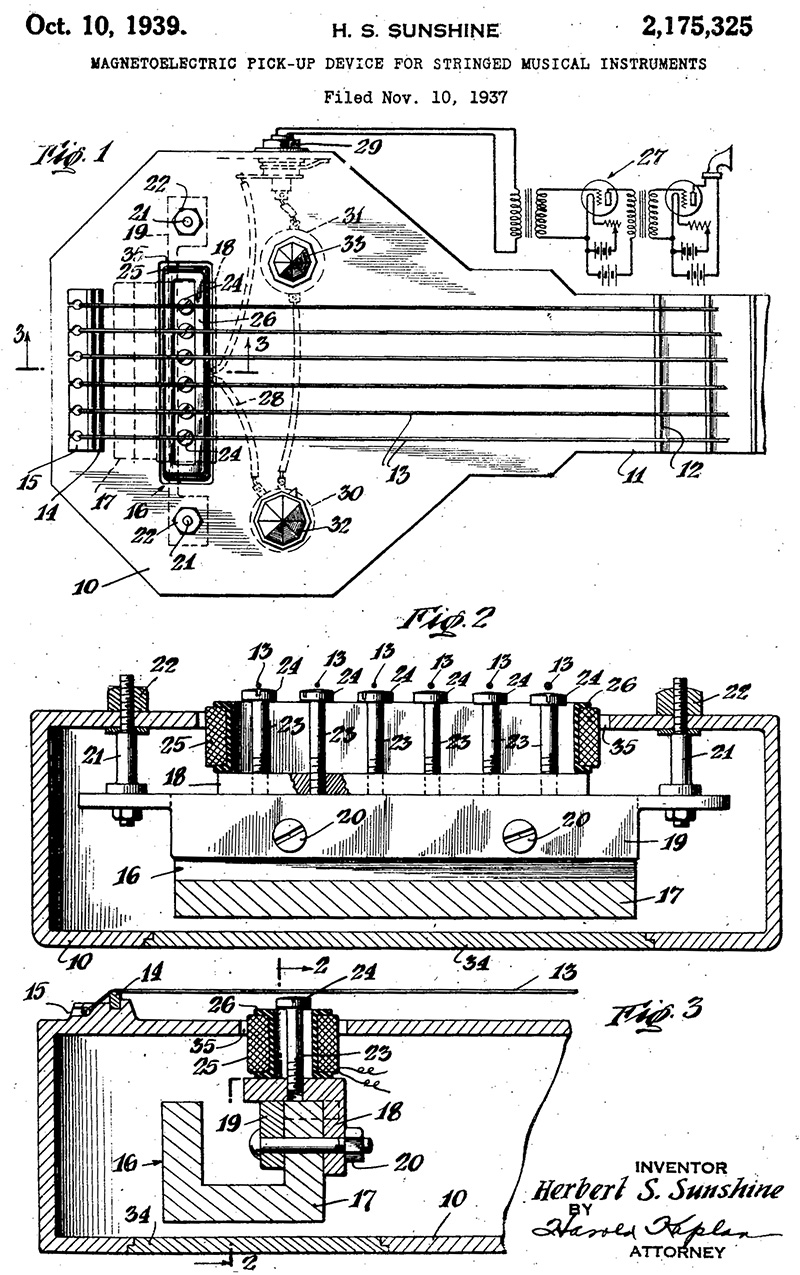
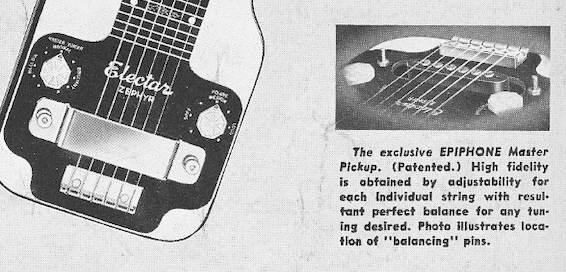

Below a 1937 Model M Spanish – two bolts through the top hold both the handrest and the pickup (attached to a bar).
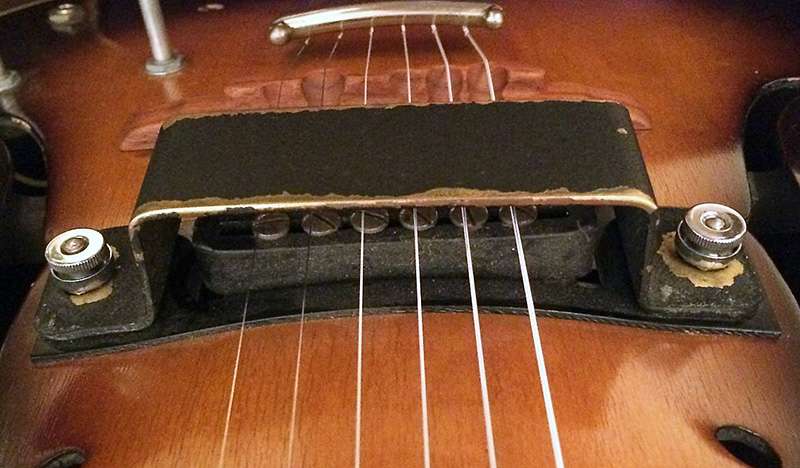
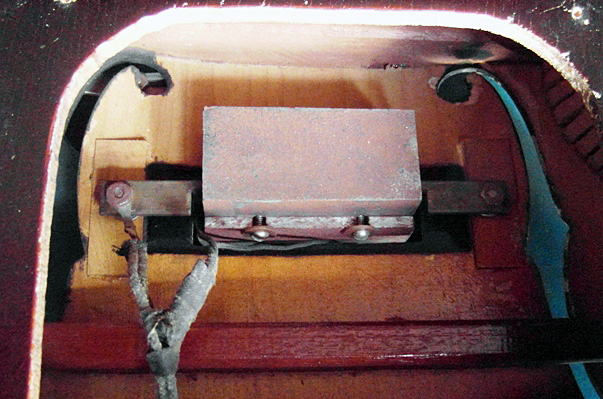
Below a 1939 Zephyr Hawaiian – basically the same pickup setup as with the Spanish version. On the Zephyr Hawaiian model, this pickup type was also used in the early post-war years – until 1947.
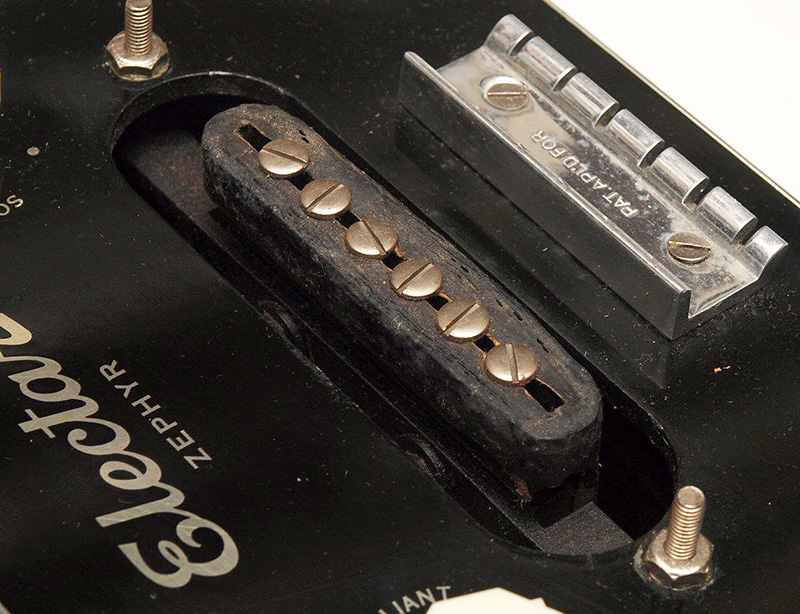
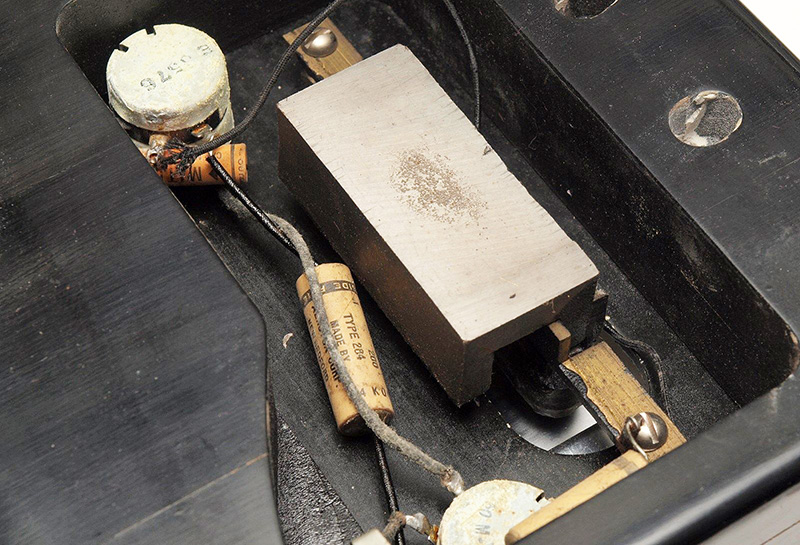
Below the Master pickup on a 1941 Solo Console. Note the "Master Voicer" tone control.
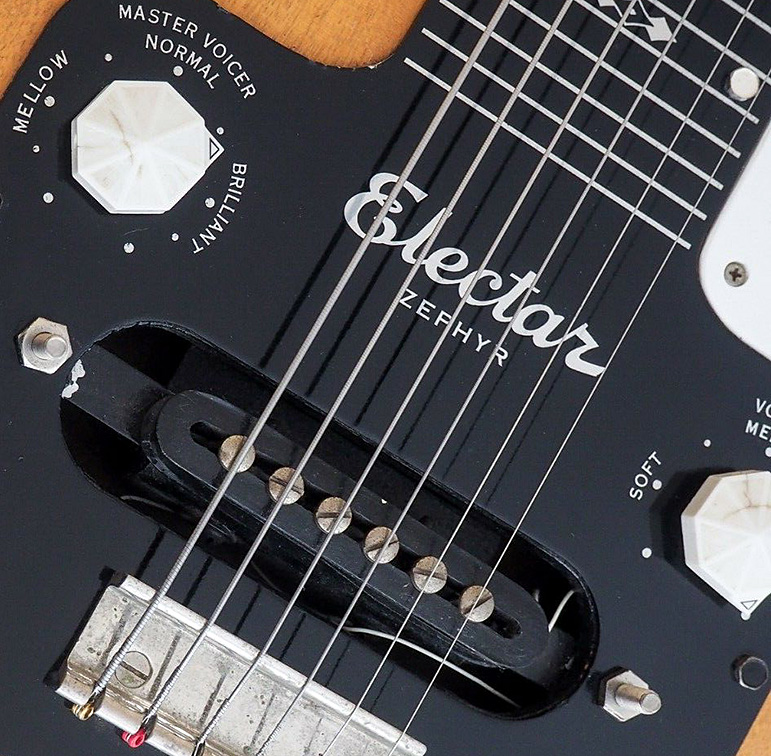
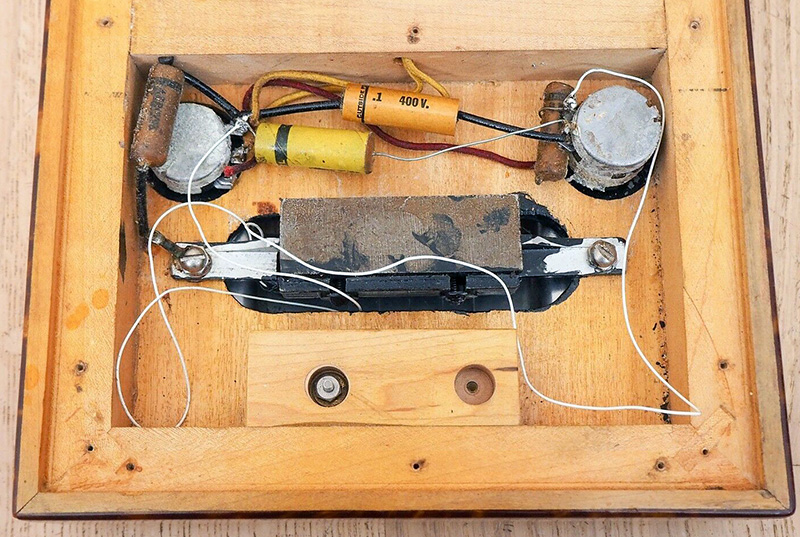
Until 1940, the setup with handrest was also used on the Zephyr
Spanish model. Note the rather large opening in the guitar's top,
showing the U-shaped magnet.


Later in 1940, the Master pickup was installed on the Zephyr Spanish without handrest, now with a black plastic cover around the coil – see below on a 1941 example. This setup required the pickup being mounted to a wooden block under the top – similar to the Century Spanish (see above under 2.).
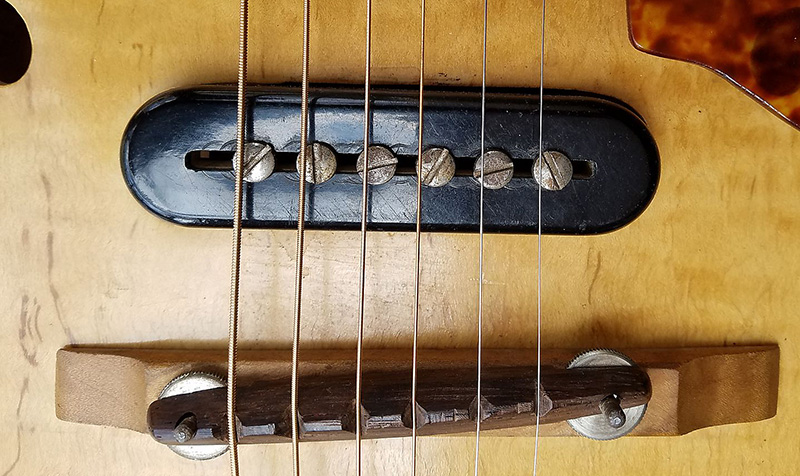

Master pickup with plastic cover, no handrest – below as 7-string version on a c. 1940 Varichord, ...

... and on a 1941 Zephyr DeLuxe.

Summary – pickups 1935–42
The table below summarizes the pickups used in Epiphone electric instruments until WW2. For later pickups see summary part 2. For detailed pickup info of any Epiphone model see models.
| Model |
1. Horseshoe pickup |
2. Blade pickups |
3. TruBalance /Master
pickups |
| Electar Ha + Sp |
1935–36: chrome 1936–37: black |
||
| Model C Ha + Sp |
|
1936–38: flat magnet |
|
| Model M Ha + Sp |
1935–36: chrome 1936–37: black |
1937–38: U magnet, handrest |
|
| Coronet Hawaiian |
|
1939–42: flat magnet |
|
| Coronet Spanish |
1939–42: 3x bar magnets |
||
| Century Hawaiian |
1939–42: L magnet, handr. |
||
| Century Spanish |
1939–42: U magnet |
||
| Zephyr Hawaiian |
1939–47: U magnet, handrest |
||
| Zephyr Spanish |
1939–42: U magnet, handrest until 1940 |
||
| Zephyr DeLuxe |
1941–42: U magnet |
Note: This overview is subject to updates whenever
new evidence surfaces.
(Feb 24, 2019; with later updates)